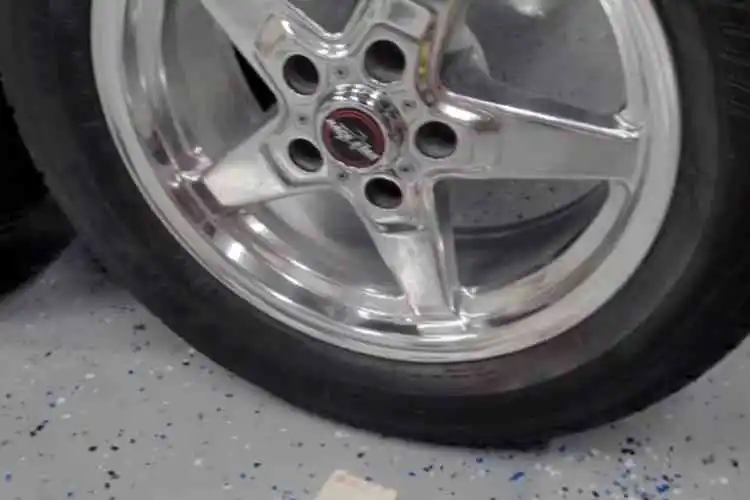Can You Use Fluid Film On Paint?
Fluid Film is a popular corrosion inhibitor that is used to protect metal surfaces from rust and other forms of corrosion. However, many people wonder if it is safe to use Fluid Film on paint. But, can you use fluid film on paint?
Yes, you can use Fluid Film on paint. According to the manufacturers of Fluid Film, it can be sprayed directly onto paint without causing any harm or adverse side effects. However, it is important to note that there is no real benefit to using Fluid Film on an already-painted surface. In fact, it would be redundant to do so from a professional point of view.
In this article, I will explore whether or not Fluid Film can be used on painted surfaces and what benefits, if any, it provides.
What is Fluid Film?
Fluid Film is a corrosion inhibitor based on lanolin that was originally developed for use in the aerospace industry.
It is currently utilized in numerous industries, including the automotive, marine, and industrial sectors. Fluid Film is a non-toxic, non-hazardous, and environmentally safe product designed to prevent corrosion on metal surfaces.
Can You Use Fluid Film on Paint?
Yes, it is safe to use on painted surfaces. You can spray or apply Fluid Film directly onto the paint without causing any harm or adverse side effects.
However, it’s important to note that using Fluid Film on already-painted surfaces may not provide any significant benefits. Fluid Film is primarily known for its corrosion protection properties, and applying it to a well-maintained and properly sealed paint job may be redundant.
When a car is manufactured, it typically undergoes a paint process that includes several layers of protective coatings, such as primer, basecoat, and clearcoat. These layers are designed to provide durability and protect the underlying metal from corrosion. In most cases, the factory-applied paint and clearcoat provide sufficient protection against the elements.
Using Fluid Film on paint may leave a greasy or oily residue on the surface, which can attract dust, dirt, and other particles. This residue may also affect the appearance and texture of the paint, leading to a less desirable finish.
Benefits of Using Fluid Film on Paint
Fluid Film is a versatile and effective product that can provide several benefits when used on the paint of a car. Here are some advantages of using Fluid Film:
Corrosion Protection
Fluid Film acts as a barrier between the car’s paint and the elements, protecting it from corrosion caused by moisture, salt, and other environmental contaminants. It creates a thin, waxy film that adheres to the surface, inhibiting the formation of rust and extending the lifespan of the paint.
Lubrication and Penetration
Fluid Film has excellent penetrating properties, allowing it to reach and lubricate hard-to-reach areas, such as seams, crevices, and joints. It can help prevent parts from seizing or corroding over time, reducing friction and wear.
Self-Healing Properties
Fluid Film has self-healing properties, which means that if the protective film gets damaged, it will flow back and re-coat the exposed area. This ability ensures continuous protection against corrosion, even in areas prone to chipping or scratching.
Long-Lasting Effect
Fluid Film is a long-lasting product, providing extended protection for your car’s paint. It does not dry out or evaporate quickly, remaining active and effective for an extended period. This characteristic makes it a cost-effective solution for long-term corrosion prevention.
Environmentally Friendly
Fluid Film is made from lanolin, a natural substance derived from sheep’s wool. It is non-toxic, biodegradable, and does not contain harmful chemicals, making it safe for both users and the environment.
Versatility
While Fluid Film is primarily known for its corrosion protection properties, it also offers additional benefits. It can be used as a lubricant for hinges, locks, and moving parts, and it can provide a water-resistant coating on electrical connections, preventing moisture-related issues.
Easy Application
Fluid Film is easy to apply and can be sprayed or brushed onto the surface of the car. It can reach hidden areas that may be challenging to access with other products, ensuring comprehensive coverage.
How to Apply Fluid Film to Painted Surfaces
If you decide to apply Fluid Film to a painted surface, you should keep a few factors in mind. First, ensure that the surface is free of any debris, grime, or other impurities. You can sanitize the surface with a mild detergent and water, or a degreaser if necessary.
After the surface has been thoroughly cleaned, the Fluid Film can be applied using a spray gun or aerosol can. Ensure that the Fluid Film is applied evenly and in a thin layer. You do not want to apply too much Fluid Film, as this can cause it to drip or flow.
Allow the Fluid Film to dry for at least 24 hours before driving or exposing the surface to moisture after application. This will allow the Fluid Film to thoroughly penetrate the surface and protect it.
Alternatives to Fluid Film for Painted Surfaces
While Fluid Film is a popular corrosion inhibitor for painted surfaces, other alternatives are also available. Ceramic coatings are one of these alternatives.
Ceramic coatings are intended to provide a protective layer over the paint, thereby preventing scratches, spiral marks, and other types of damage. Additionally, they are highly resistant to ultraviolet radiation, which can cause paint to fade over time.
Wax or sealant is another option besides Fluid Film. The purpose of waxes and sealants is to provide paint with a protective layer against UV radiation, bird droppings, and other environmental contaminants. They are simple to administer and can be effective for a number of months.
Conclusion
It is safe to use Fluid Film on painted surfaces, but there is no practical advantage to doing so. Fluid Film applied to the undercarriage and other metal components of a vehicle exposed to saltwater or other corrosive environments can provide additional protection against rust and corrosion.
Other alternatives, such as ceramic compounds and waxes, can provide comparable levels of protection for painted surfaces. In the end, the product you choose to use will depend on your individual requirements and preferences.


